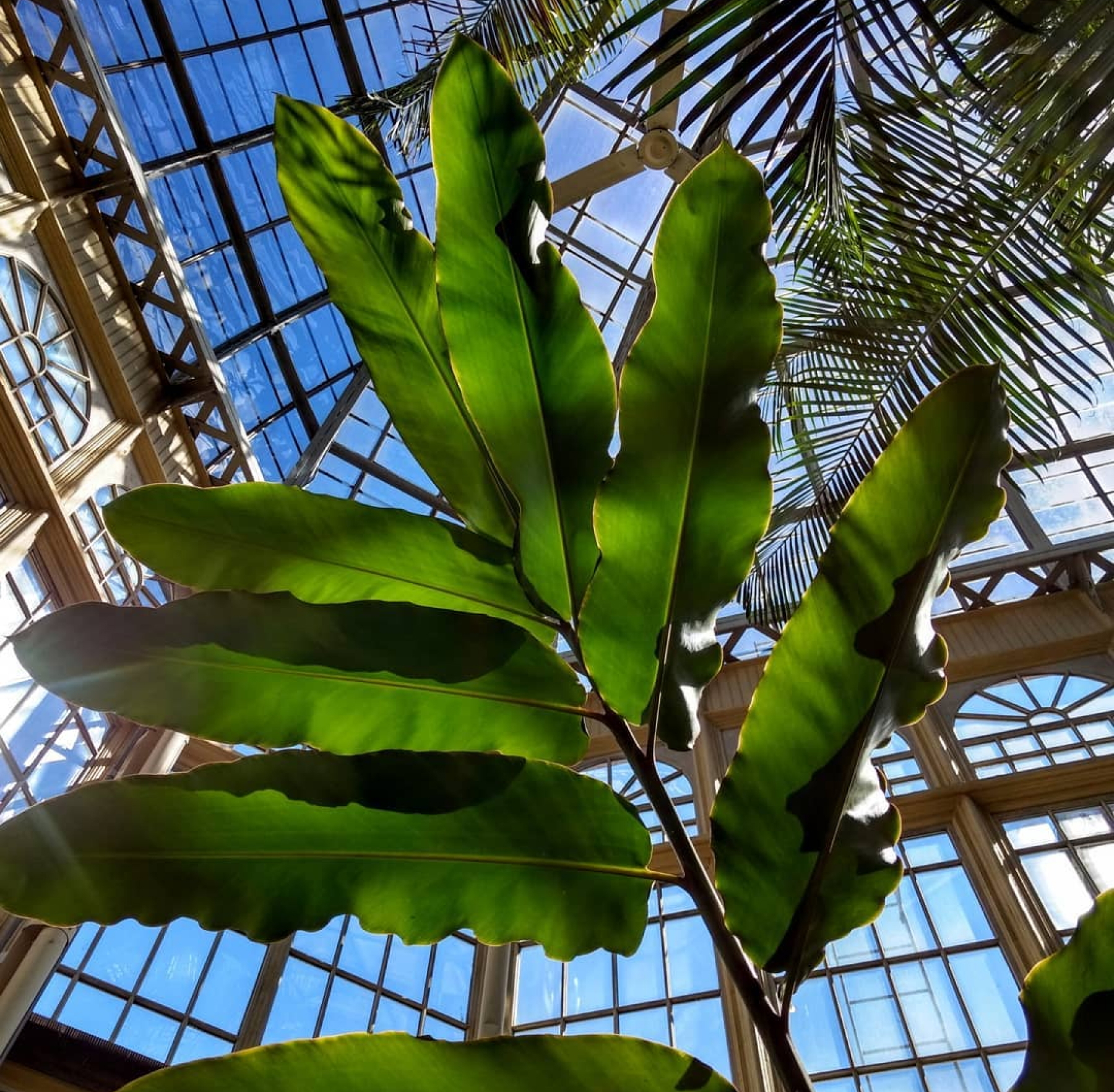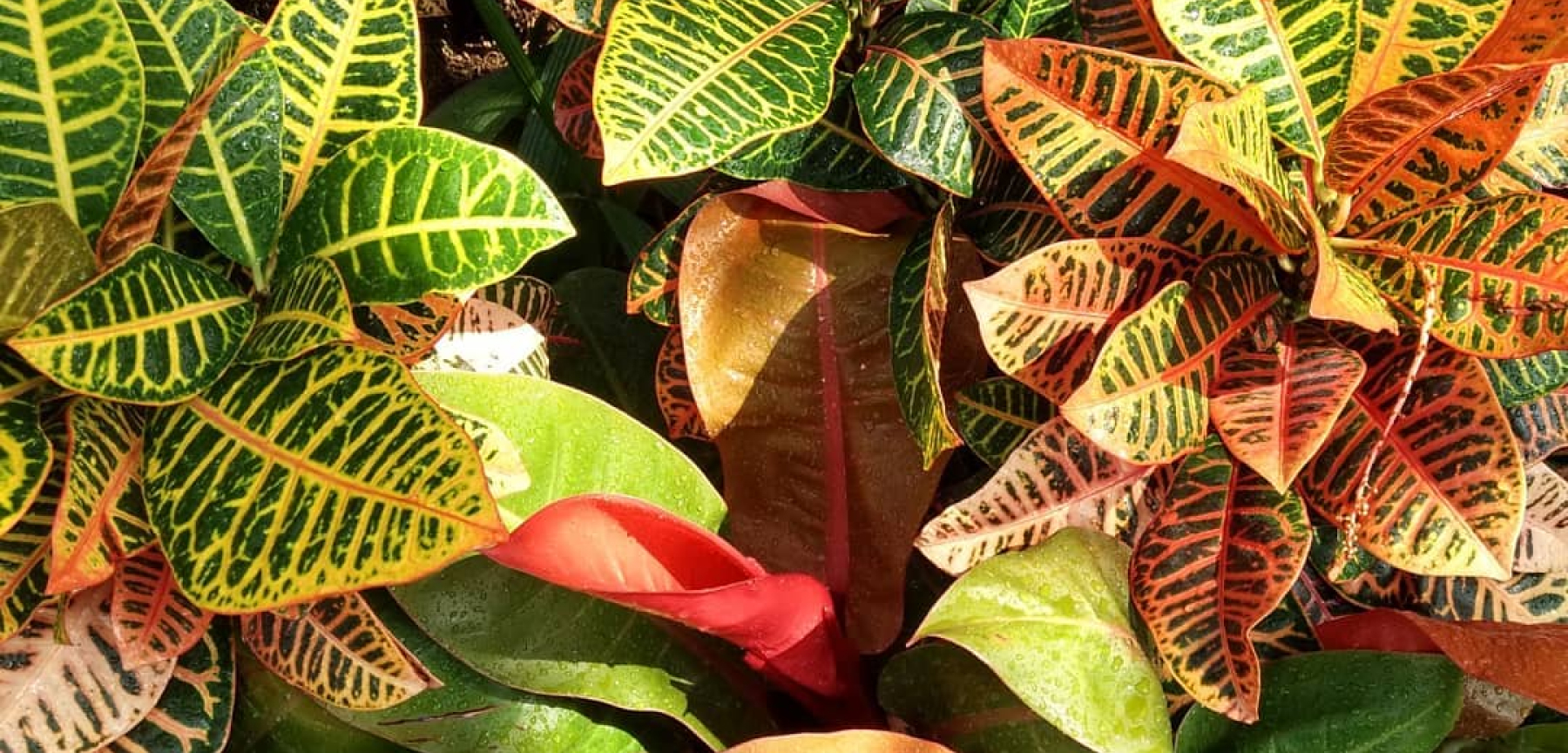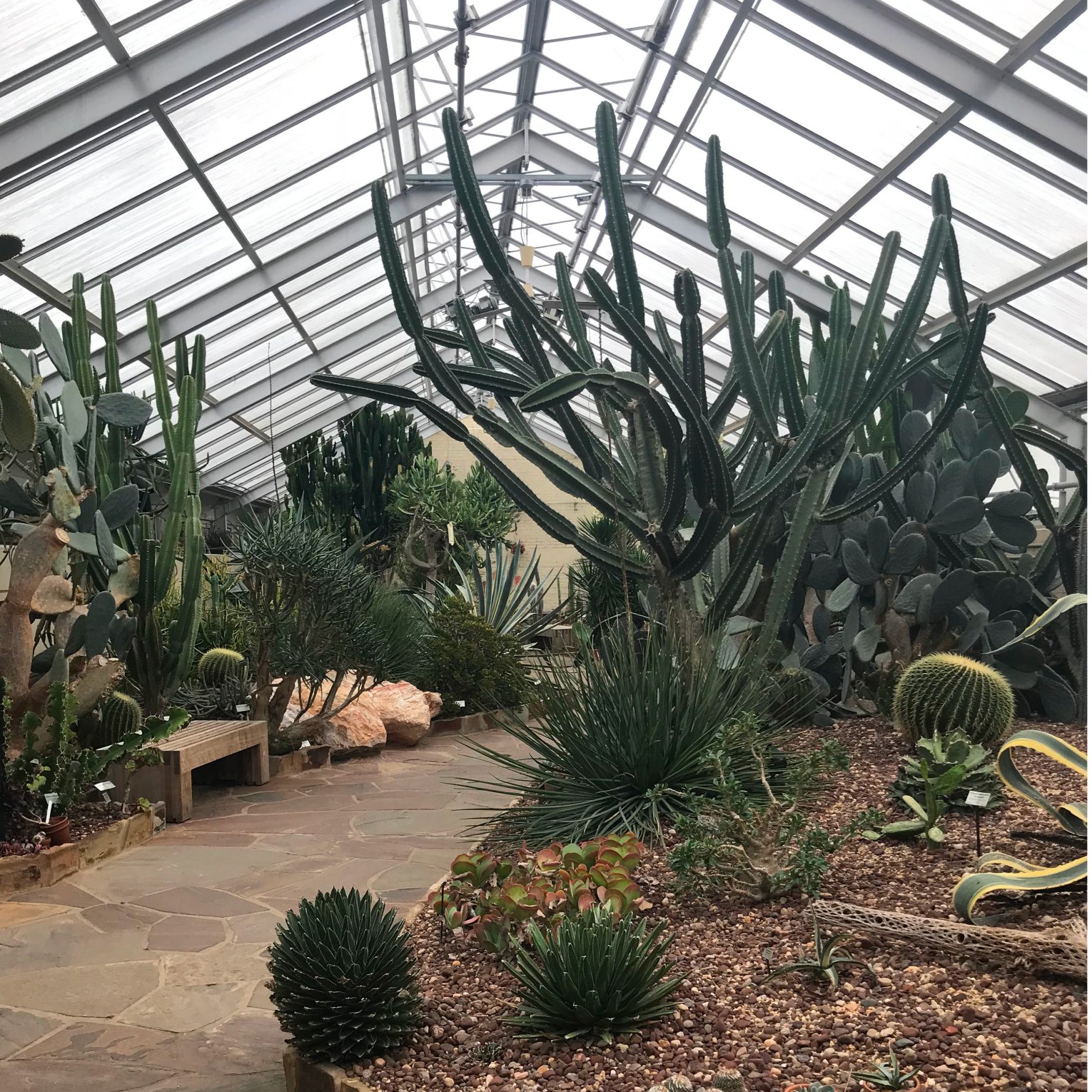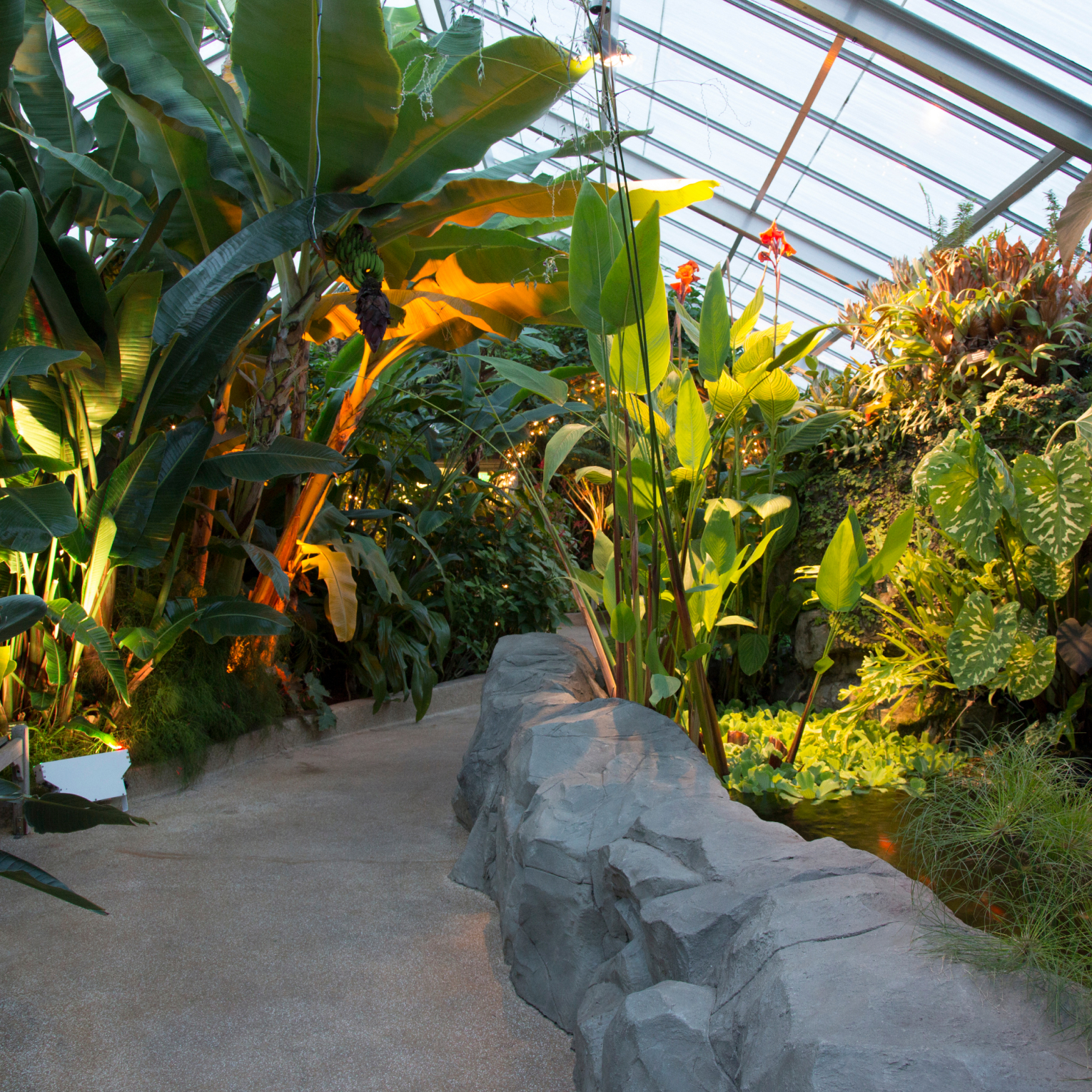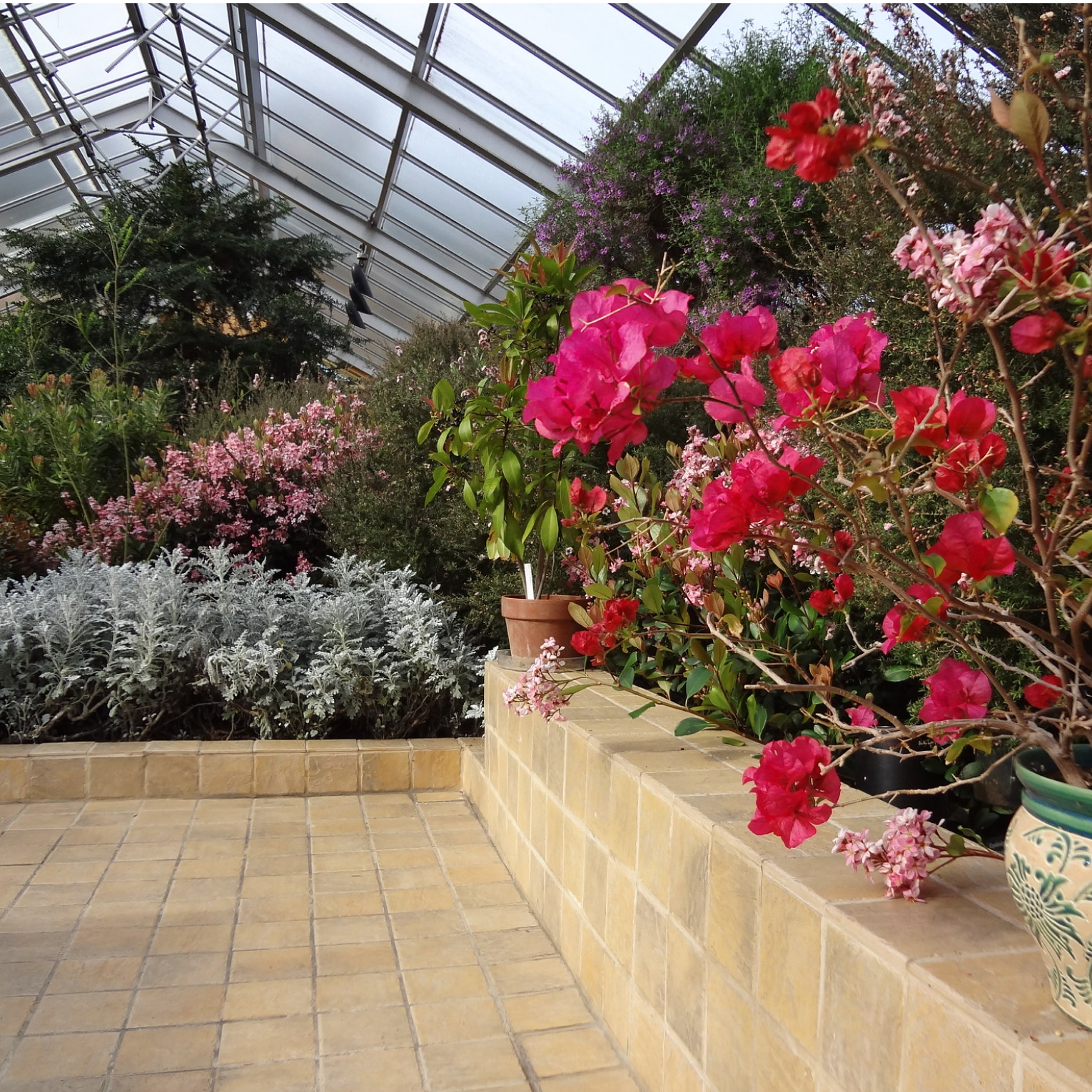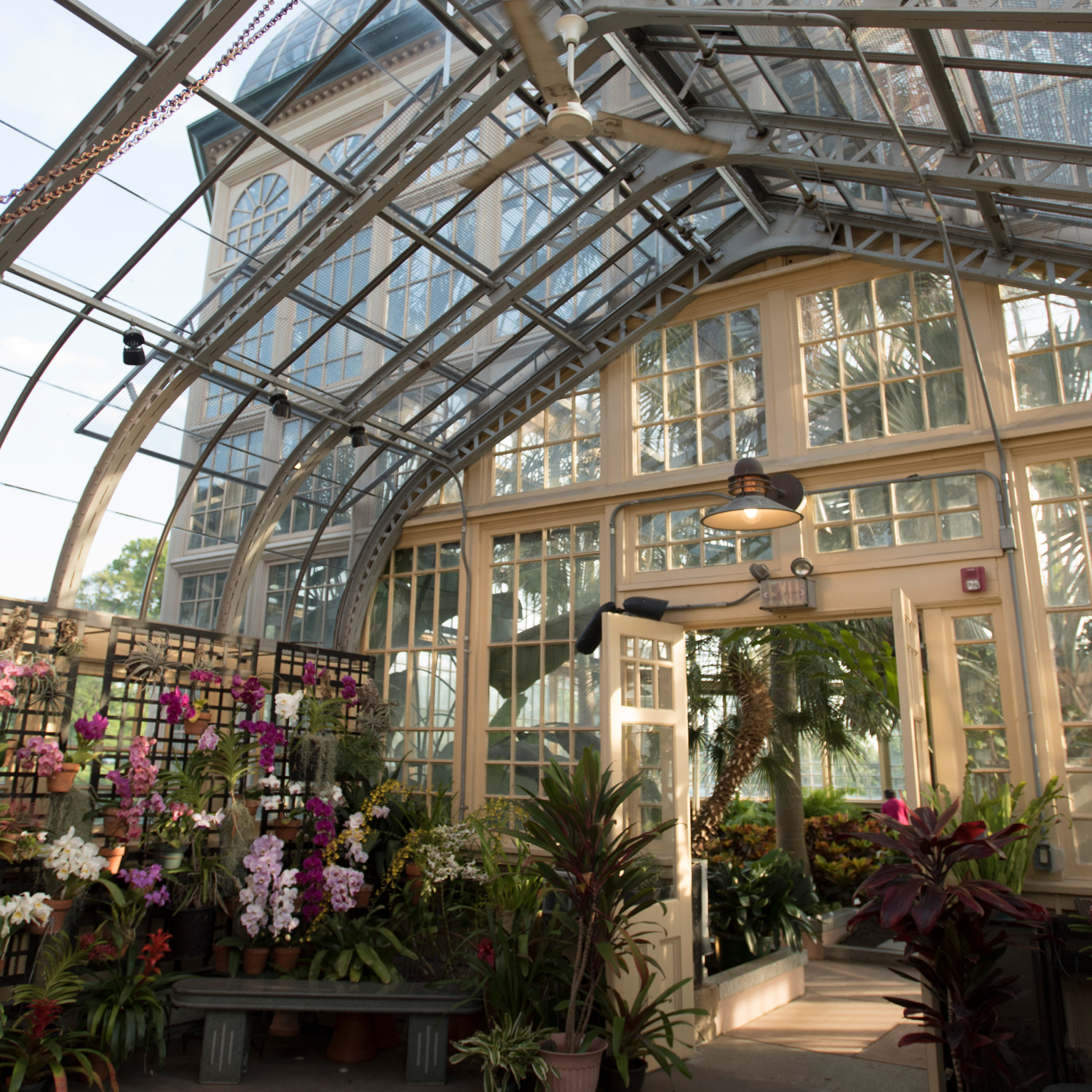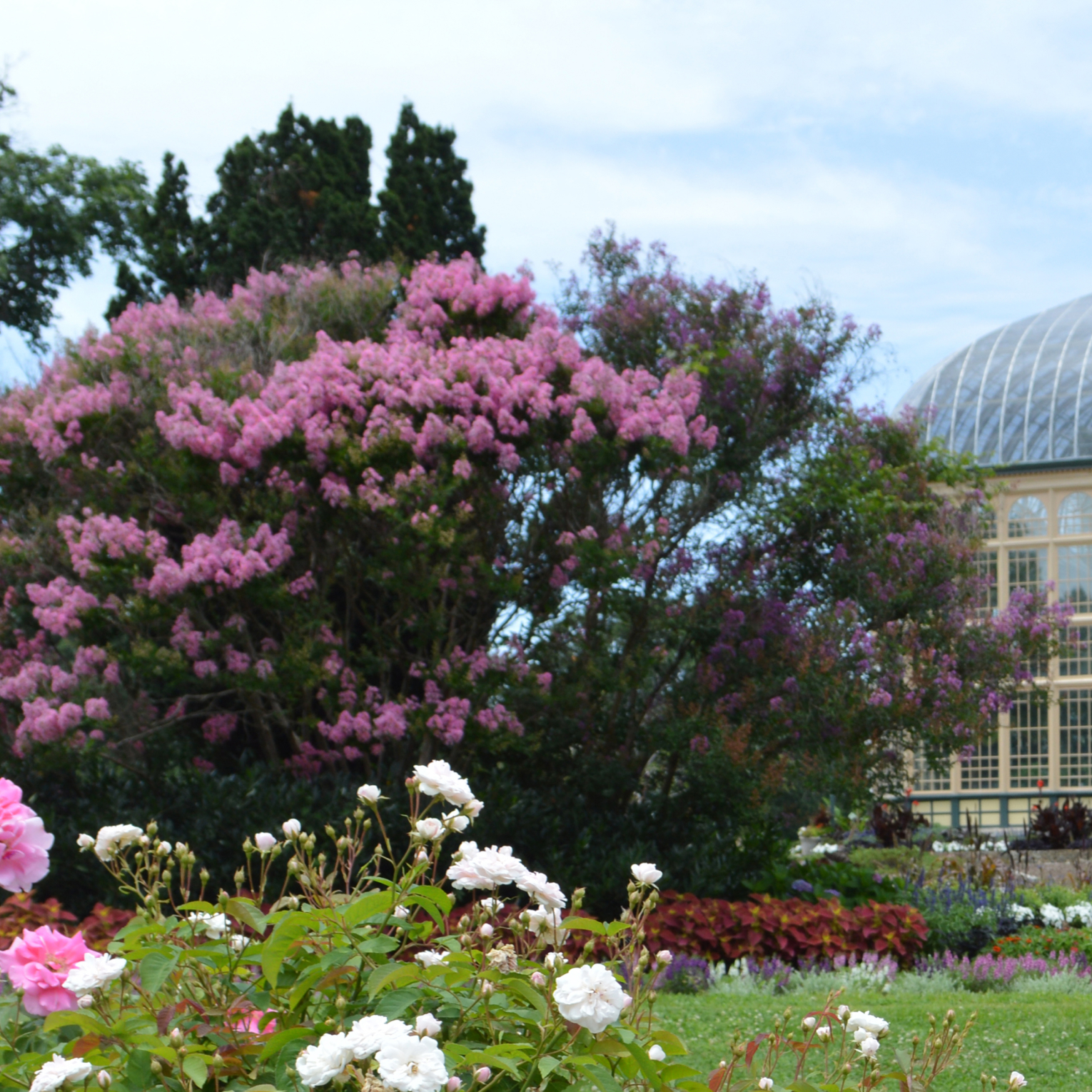Palm House
Discover the crown jewel of the H.P. Rawlings Conservatory & Botanical Gardens—the Palm House.
Built in 1888, this architectural marvel of glass and iron offers visitors the unique opportunity to wander under towering palms amongst vibrant blooms in the heart of the city.
Your support ensures the Palm House remains a testament to the city’s rich horticultural legacy. Donate today and be part of preserving Baltimore’s history.
Featured in the Palm House
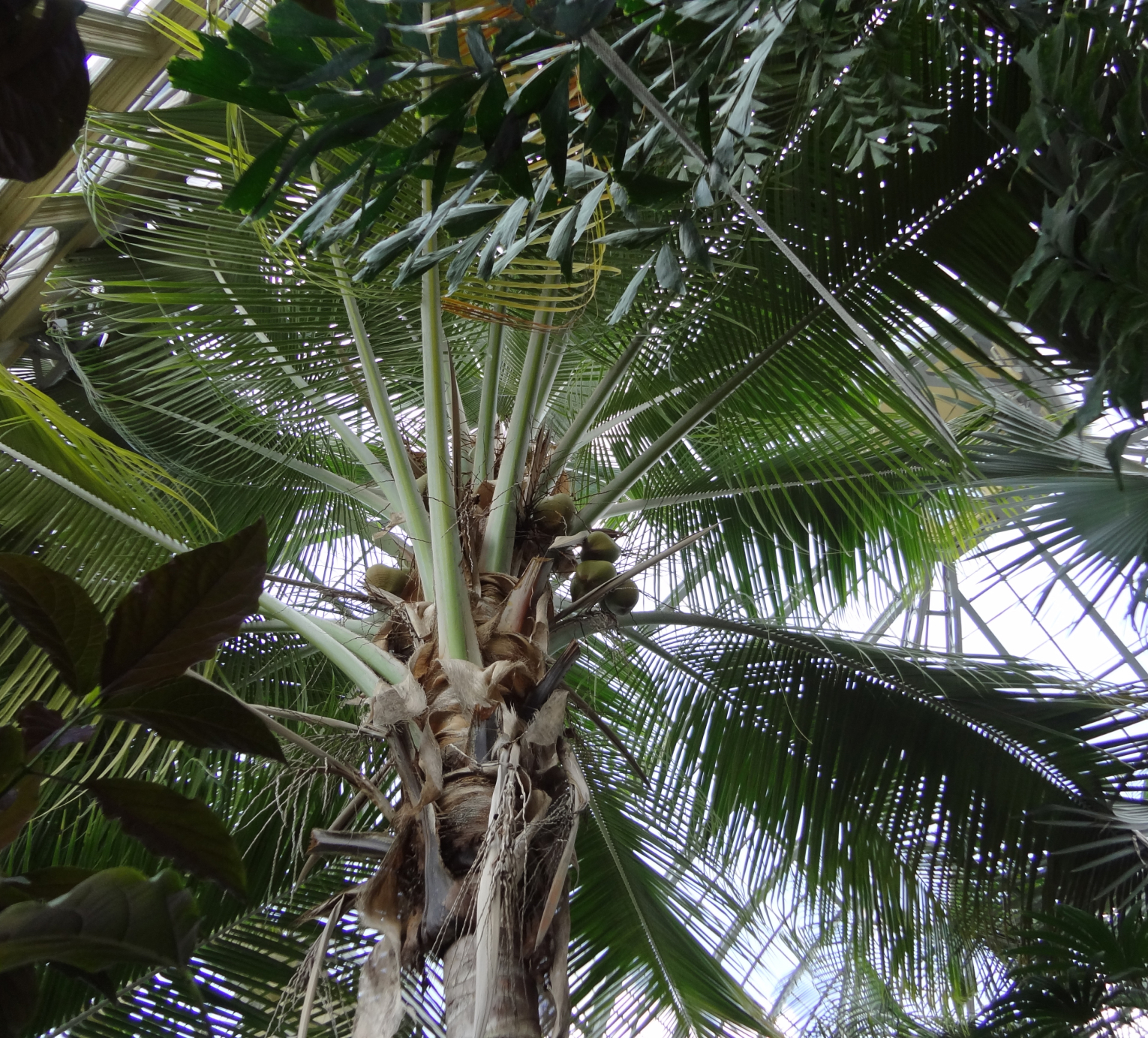
Malayan Coconut Palm
Cocos nucifera
The Green Malayan Coconut Palm is a tropical palm tree that is highly prized for its versatile uses and iconic appearance. This palm variety is native to Southeast Asia and is known for its ability to thrive in coastal regions with sandy soil and warm climates. The Green Malayan Coconut Palm is characterized by its tall, slender trunk and large, feather-like fronds that can reach lengths of up to 18 feet. Its coconuts are green when young, turning brown as they mature.
It is also used for its wood and leaves, which are utilized in construction, thatching, and weaving.
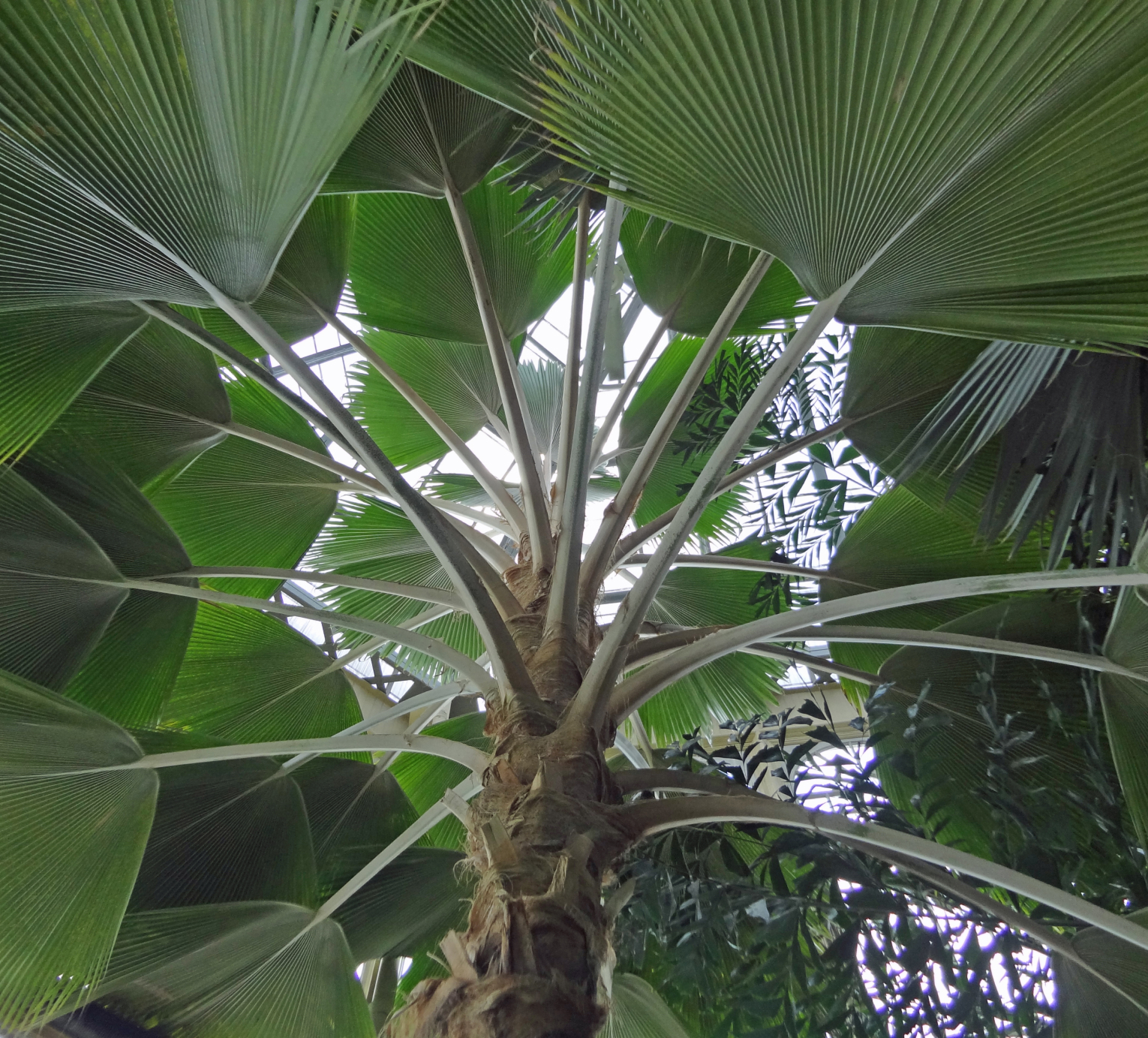
Fiji Fan Palm
Pritchardia pacifica
The Fiji Fan Palm is a solitary palm that is native to Fiji in the southwest Pacific Ocean. It has been introduced to a large number of tropical islands in the Pacific Ocean, including Tonga and Samoa where it may also be native, and in many other tropical to sub-tropical habitats throughout the world. It is a gray-trunked tree (mature trunk diameter of 12″) that grows slowly to as much as 20-30′ tall in tropical areas, but smaller when grown indoors in containers as a houseplant.
It features huge, many-segmented, palmate, fan-shaped, lime green leaves to 6′ long and nearly as wide.
Leaves have commonly been used as fans hence the common name of fan palm.
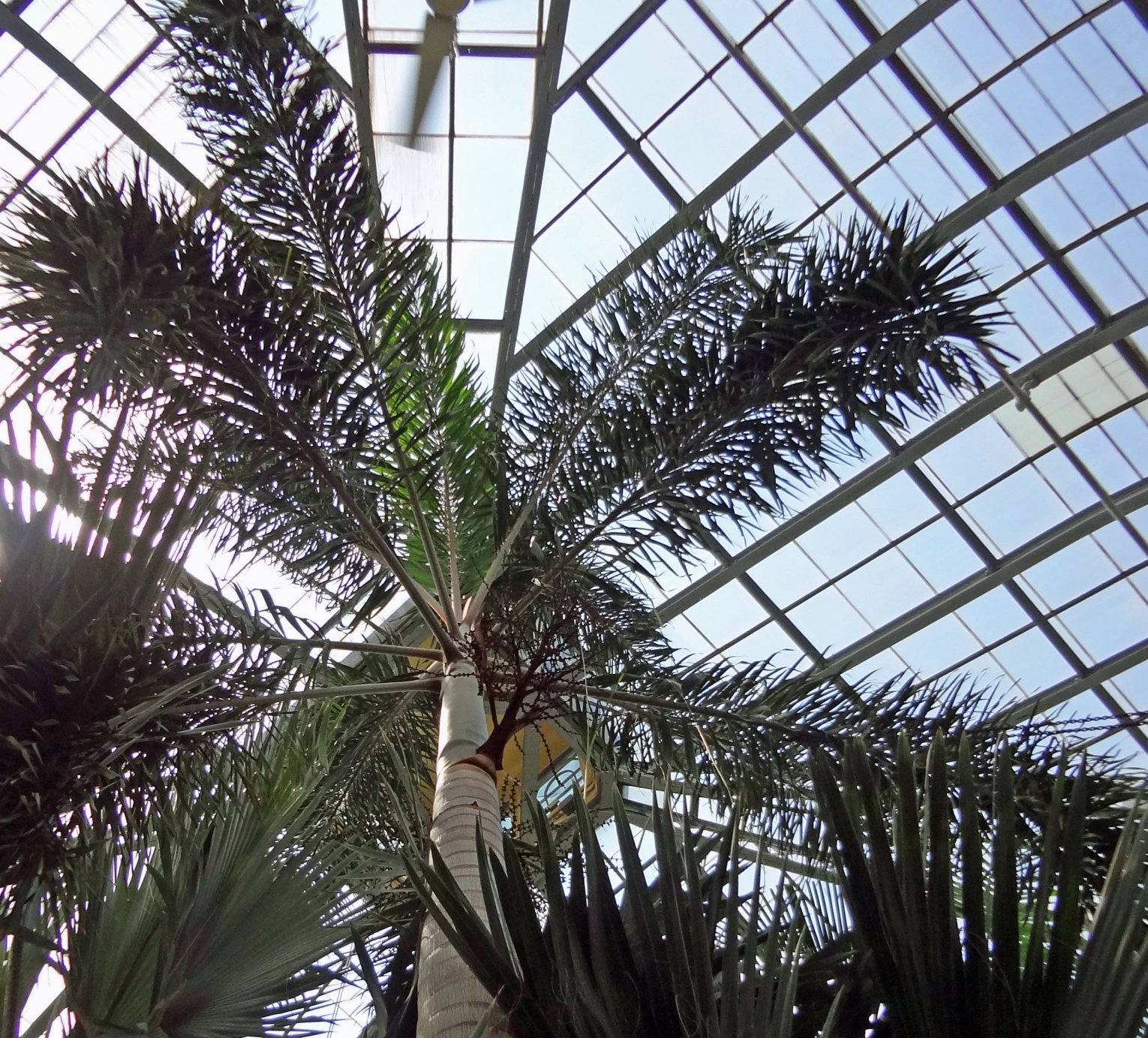
Foxtail Palm
Wodyetia bifurcata
The Foxtail Palm is a strikingly gorgeous and distinctive palm tree, endemic to Australia’s tropical rainforests. Its moniker comes from the form of its fronds, which mimic a fox’s bushy tail. The leaves form a symmetrical, circular design, giving the plant a full and luxuriant appearance that adds a bit of refinement to any landscape or yard.
Its slender, smooth stem can grow up to 30 feet tall and be crowned by fronds spanning up to 10 feet across. The trunk is light grey, with bands that reflect previous years’ development.
The palm’s vibrant and multicolored cluster of flowers is one of its most distinguishing characteristics.
1888: Druid Hill
The Palm House has been completed during the year and stocked with plants; it is well and faithfully built and is as tight as it is possible to make so large a building.
Excerpt from the Baltimore City Park Annual Reports 1884-1889
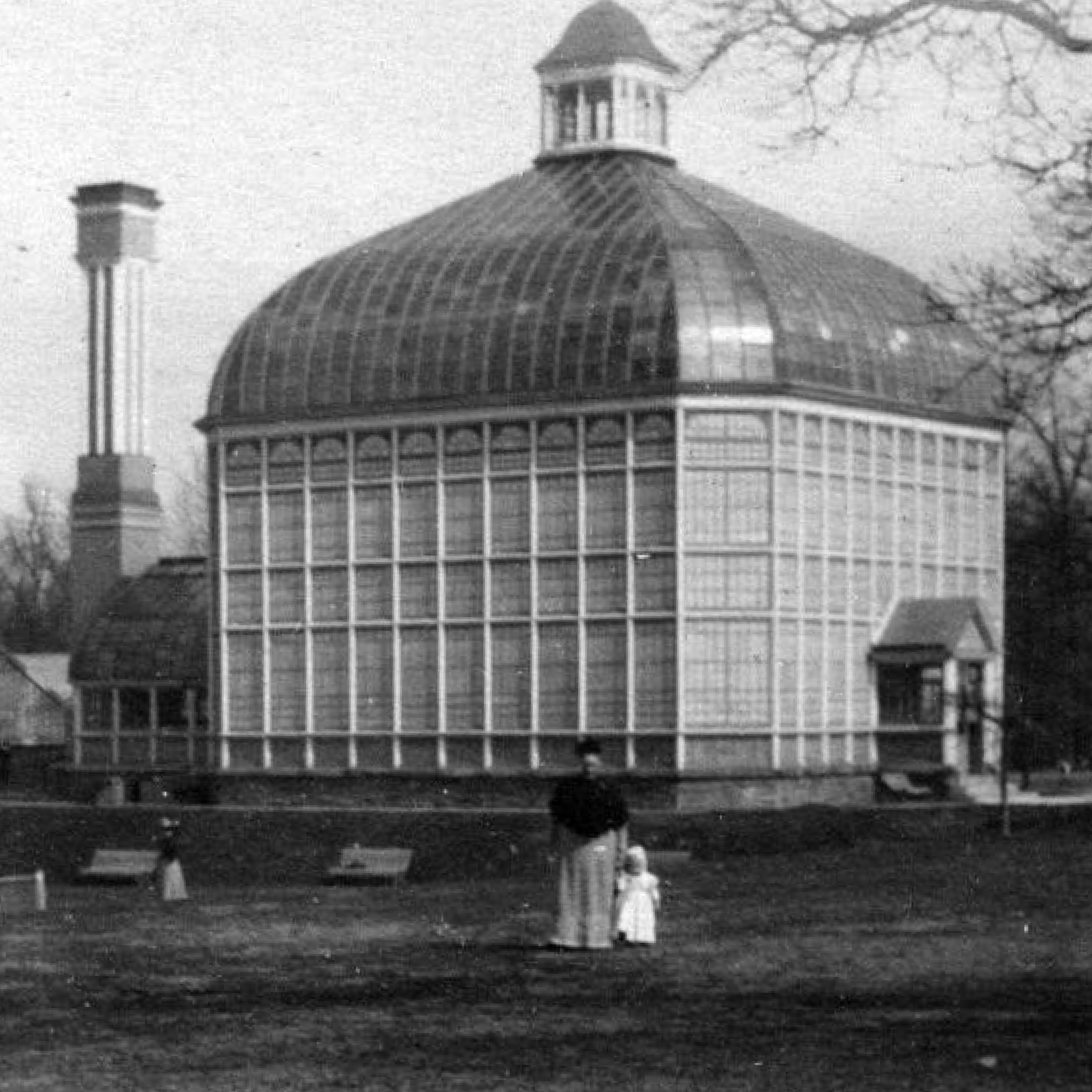
Get Involved
As in the past, the future of the Rawlings Conservatory depends on its volunteers and donors. Both play a critical role in maintaining our mission to enrich the lives of all who visit–as a unique center where education, culture, and nature intertwine.
Here’s how you can get involved.

